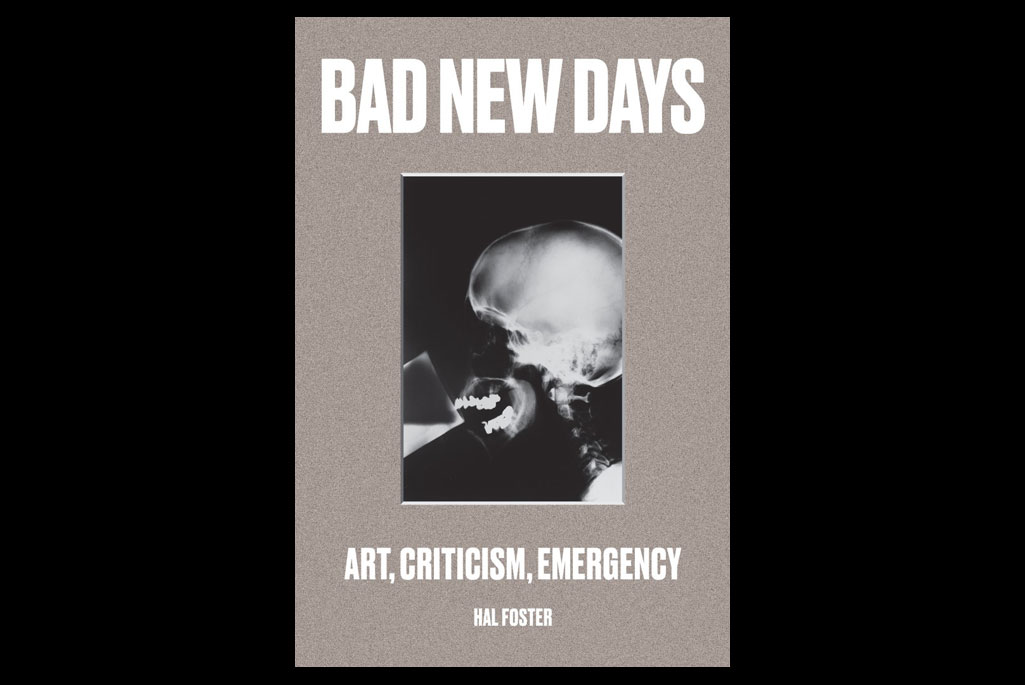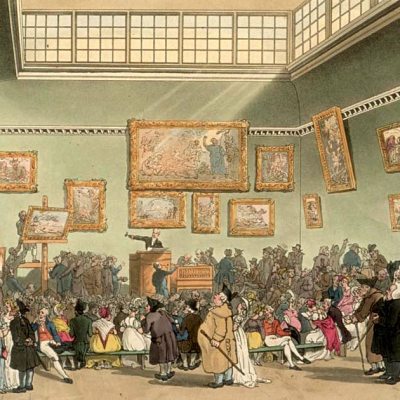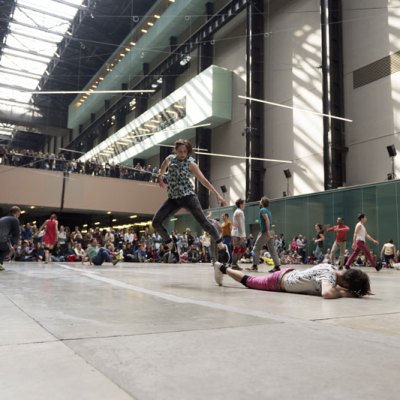In his new book, the critic and art historian Hal Foster examines the art of the last 25 years in Western Europe and North America and sticks up for the unfashionable idea of the avant-garde. He talks to Fatema Ahmed about being a critic in a ‘post-critical’ world and why museums shouldn’t cater for the undead.
The title of your new book is from Bertolt Brecht – ‘Don’t start from the good old days, but the bad new ones.’ Can you explain why you chose it?
The title appealed to me because it speaks to an aesthetic and a politics that believes that you need to work with what is given. I also like the idea, from Thomas Hirschhorn, of the capitalist garbage bucket – you have to work with the junkspace (as Rem Koolhaas would say) that is given to you. So the art that I focus on, for the most part, is by people who don’t imagine that there’s a way out of the present; they just take its badness for what it is. And sometimes they take a bad thing and make it worse – that’s what I discuss in the chapter called ‘Mimetic Excess’. Everyone misreads the title as ‘Bad News Days’ or ‘Bad News Bears’ [the 1976 film starring Walter Matthau]. It’s a gift to reviewers, it now occurs to me.
Thomas Hirschhorn is the only artist you mention in more than one section of the book? Why does his work appeal to you?
As a critic and as a historian/theorist – whatever I am – you develop affinities with practitioners. I was close to Richard Hamilton and all the different things we understand by Pop; I remain close to Richard Serra, who makes me think about sculpture and architecture in a critical way. With Hirschhorn it’s different… Hamilton was two generations above me; Serra’s one. Thomas and I are the same generation – formed in very different places, but through very similar materials. We’ve had conversations for a long time now. More than any other of the artists in the book he is attempting to think about emergency in his work, to make it almost a motivation – to work out of emergency, rather than to flee it or exploit it.
Direct Sculpture 1999, Thomas Hirschhorn Courtesy the artist and Galerie Chantal Crousel; © Thomas Hirschhorn
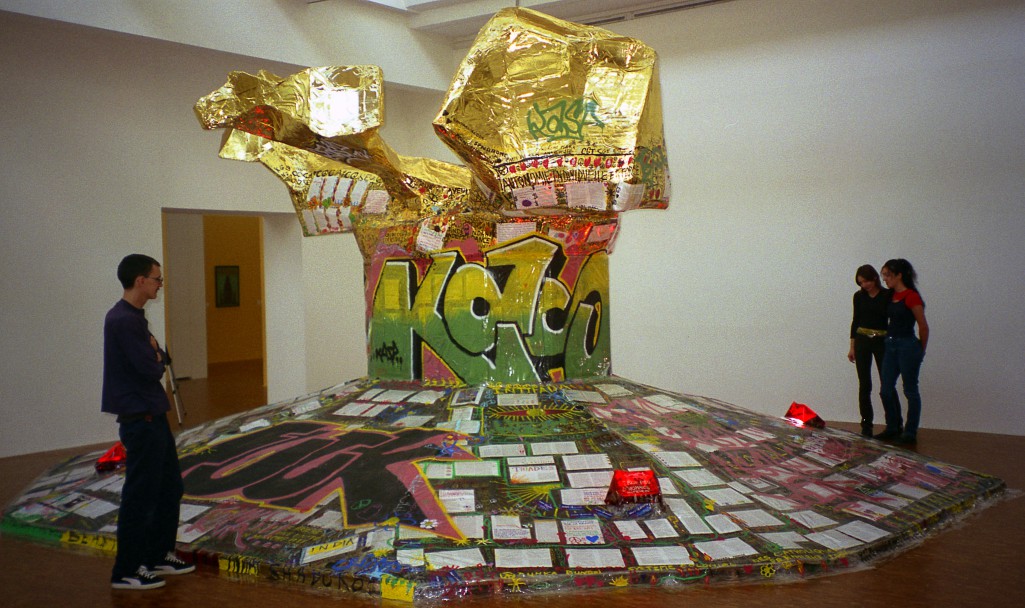
The book concentrates on art made after 1989. You say that although it is too early to historicise this work, it’s not too early to theorise about it. Why focus on this period?
1989 now seems like a point from which there began a new regime of intermittent emergency. At one point it seemed to be a transformative ‘The Wall is down / Tiananmen Square / New World Order’ moment but now, in retrospect, it seems like the moment of the full triumph of a neoliberal order. This is now a conventional thing to say, but it seems to be a moment of opening that was closed. It seems distinct from the extended moment of the 1960s, which in 1989 was closed down. What we advocated in terms of postmodernism at the time was recuperated by the culture at large. More specifically, the postmodern ideas of ‘everything is a text, everything is an image’, had become clichés. This was made even more dramatic in the art world due to the Aids epidemic, so there was a turn towards figurations, even disfigurations of the body. There was a new interest in the alternative and in counter-histories.
Why the interest in artists, like Tacita Dean, who are delving into archives and uncovering forgotten figures and working in endangered mediums, like film?
For Tacita and for others of her generation, there’s a real interest in the outmoded. What do you do when film seems to be eclipsed, what do you when photography seems to be eclipsed? There’s a new energy that returns to mediums and modalities, when they seem to be threatened historically. It’s also a way to index time. That’s what Tacita continues to do, but she’s not alone at all. That’s a little different from the longue durée, the long duration that also interests me.
What does ‘long duration’ mean in the context of art and of art history?
I’m interested in artists who are interested in capturing very different temporal realities in a work. There’s an American sculptor called Charles Ray, he does figures – but not like Antony Gormley – he juxtaposes contemporary models with classical types and compels you to think about very different orders of time within his work. That I see more and more. And in criticism, my generation of modernists/(post)modernists is so fixed on rupture, but now it’s a turn to accounts of stress, and of persistence – and that’s certainly true of art historians like Alexander Nagel and Christopher Wood. There’s a Burckhardtian turn in the last generation, to the study of the afterlife – not just of antiquity, but the afterlife of modernity.
Bubble House (detail) 1999, Tacita Dean © Tacita Dean. Courtesy of the artist, Marian Goodman Gallery, and Frith Street Gallery

You’re uncomplimentary about a contemporary art world in which the market prevails and in which there’s no room for real critique. How is it possible to be a critic in this ‘post-critical’ environment?
‘Post-critical’ is the one term with a question mark beside it. It’s not a term I want to embrace. ‘Contemporary’ means ‘global’ for many people – contemporary art operates in a market that seems to be quite open and there are lots of little niches within it. And in that space, not many people want to challenge each other. Either they can’t because they don’t have any shared terms, or they can’t because they don’t want to upset the détente – the arrangement of ‘I won’t mess with you, if you won’t mess with me.’
I’m enough of an art historian, or a Wölfflinian, that there has to be a real discursive engagement. Not everything goes. Not everything is possible in every moment. When that seems to be the case, it’s an illusion. The very first long text that I wrote years ago was called Against Pluralism. I’m not against political pluralism, quite the opposite, but I’m against aesthetic relativism.
You’re quite unusual for believing that the avant-garde is still a useful term – and that there are still avant-garde forms of art.
I’m not interested in the apocalyptic dimension of avant-garde rhetoric: the end of this, the end of that, the end of man, the end of art. The avant-garde that interests me in this book doesn’t believe that there’s an order out there that’s coherent enough to challenge; nor is it romantic enough to believe – and this is what revolutionaries believe – that one can simply posit a new order. I’m interested in an avant-garde that’s more immanent – it seeks out the cracks in the present. And the reason I hold on to the term is that, if you strip out the military connotations, it’s one of the few terms that articulates both the aesthetic and the political.
You spend most of the book proposing a set of critical terms we might use to discuss contemporary art, but conclude with a polemic about performance and participatory art in museums. What are you criticising, in particular?
Roof Piece Re-Layed 2011, Trisha Brown Dance Company at the Museum of Modern Art, New York Photo: © Yi-Chun Wu/The Museum of Modern Art
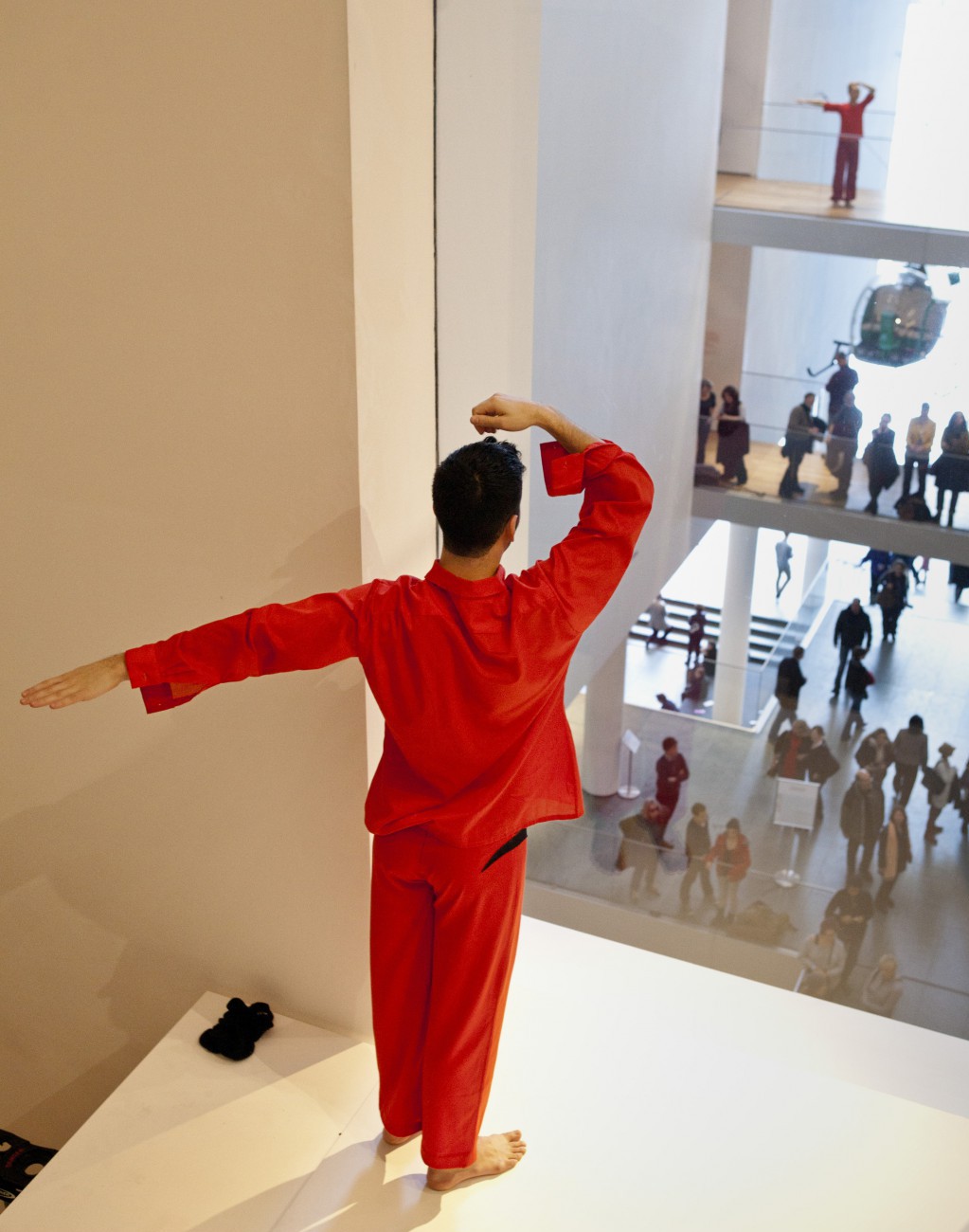
Museums are concerned to stay somehow relevant to the culture, which, in this phase of neoliberalism is all about self-actualisation: you are your own portfolio, and you have to perform your skill-set again and again. For the museum, the pressure to stay relevant is unconscious, it’s not programmatic, and it’s a real anxiety – I don’t mean to dismiss it all. I just want to point to the ideological assumptions: that we’re passive, that we need to be activated; that the inanimate art is simply dead, that it doesn’t have its own force.
It’s obvious that for all this rhetoric of self-actualisation, the cultural meme, the dominant cultural trope is the zombie. It’s a mode of condescension to the viewer that they have to be active all the time. When I go to museums you always see people being surprised by things, and I eavesdrop on conversations that I often find extraordinary. You never know when the transformative moment can hit.
Richard Serra has the last word in your book The Art-Architecture Complex. He says that artists can always find ways to make museums unpredictable, and to fight against their spectacular architecture – and that museums should want this too: ‘They can’t simply collect collectors.’
He always has the last word in our conversations! There was a time – perhaps it was a hypothetical space – when we believed that the museum was part of the public sphere, when it wasn’t merely in the pursuit of patrons. That’s disappeared. And on the one hand, museums are places of self-actualisation, or more and more self-performance – that’s for the 99 per cent. On the other, you have the 1 per cent, or the 1 per cent of the 1 per cent, who treat the museum as a place of value creation and value maintenance – somewhere between a bank and a financial instrument. In the US, we have more private museums and museums are leaving the public sphere altogether, but they still have tax breaks – in case they open one afternoon a week to bus in kids from the local school district.
I’m old enough to remember a different version of MoMA, for example, and the actions of artists like Hans Haacke. This corporatisation of museum space has only been in the last 25 years. So although it seems almost natural now, it’s quite historically specific. We can see the beginning, but we might not be able to see the end…
Bad New Days: Art, Criticism, Emergency is published by Verso Books.
